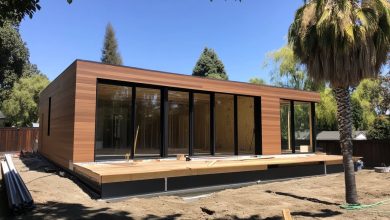How to Find Floor Plans of My House: A Step-by-Step Guide

Understanding the layout of your home is essential whether you’re planning a renovation, selling your property, or applying for a building permit. If you’ve ever asked, “How can I find floor plans of my house?” you’re not alone. Many homeowners misplace original blueprints or never receive them in the first place. Fortunately, there are several ways to locate, request, or even recreate your house’s floor plans.
In this detailed guide, we’ll explore how to Find Floor plans of my house using various resources—from government records and online tools to hiring professionals. With the right approach, you’ll gain access to the structural and design information you need to move forward with confidence.
Why Floor Plans Are Important
Before diving into the process, it’s helpful to understand why having access to your home’s floor plan matters. A floor plan is a scaled diagram of your home’s layout, including room dimensions, window and door placements, plumbing and electrical routing, and structural elements.
Having this layout helps with space planning, remodeling, interior design, real estate marketing, and ensuring compliance with local building codes. It also aids professionals such as contractors, engineers, and architects in making accurate and cost-effective recommendations.
Start with Your Paperwork
One of the first places to check is your own paperwork. If you purchased your home through a real estate agent, the property folder may include a basic floor plan or reference documents that point to its source. Sometimes the seller provides original blueprints or permits at the time of sale. Look through purchase contracts, inspection reports, or appraisal documents for potential leads.
You can also check your mortgage documents or homeowner’s insurance records. These often contain layouts used for evaluation and underwriting, especially if the home was appraised or assessed for reconstruction value.
Contact the Local Building Department
Your city or county building department is one of the most reliable sources for original floor plans, especially if your home is relatively new or underwent recent construction. Municipal building departments typically require copies of architectural plans during the permitting process.
Request access to these records through the building or planning office. You may need to provide proof of ownership and the property address. Some jurisdictions allow walk-in requests, while others require you to submit an online or written request. There may be a small fee for digital or printed copies.
Note that these offices often keep physical files for a limited time, especially for older homes. However, if any additions or major renovations were completed, those updated plans might still be available.
Visit the County Assessor’s Office
Another helpful source is your local tax assessor or property records office. These departments maintain property data for tax purposes, and while they may not have full architectural blueprints, they often have detailed building sketches that include room dimensions and layouts.
These documents can offer a basic overview of your home’s structure, including total square footage, number of floors, and room distribution. While not suitable for construction use, they can help you begin visualizing your home’s original configuration.
Check with the Original Builder or Developer
If your home was part of a new construction development or built within a planned neighborhood, the builder or developer may still have copies of your specific floor plan. Companies that construct multiple homes typically keep architectural templates for each model.
Reach out to the original builder if you know their name. Even if they no longer operate under the same brand, related companies or successor developers may have inherited their archives. Some builders offer floor plan retrieval as part of a customer service package for past buyers.
Ask the Previous Homeowners
If you’re not the first owner of the house, consider reaching out to the previous residents. They may still have physical copies of floor plans or know where to find them. This is especially useful if the home went through renovations during their ownership.
You can attempt to contact them through your real estate agent or by sending a letter to their forwarding address, if known. Be polite and clear in your request—you might be surprised how often former owners are happy to help.
Explore Online Databases and Archives
Several digital resources specialize in providing floor plans, especially for common home models. Websites like Realtor.com, Zillow, or Redfin sometimes display floor plans on old listings. If your property was ever listed on these platforms, check archived versions of the listing for floor plan images or downloadable files.
You can also use floor plan databases such as ePlans or Houseplans, where you may find layouts that closely resemble your own home. These aren’t exact matches but can offer a starting point for visualizing your space or creating updated versions.
Hire a Professional to Create As-Built Plans
If all else fails, you can always commission a professional to recreate the floor plan. Architects, draftsmen, or measured building surveyors offer “as-built” services—meaning they visit your home, take measurements, and create an accurate set of floor plans based on the current layout.
This is especially valuable if your home has undergone undocumented modifications or you need up-to-date plans for a renovation. Professionals use tools like laser measuring devices, 3D scanning, or CAD software to produce precise and editable plans.
The cost for this service varies based on the size and complexity of your home, but it’s a worthwhile investment if you need reliable documents for planning or compliance purposes.
Use Mobile Apps or Scanning Tools
Technology has made it easier than ever to generate basic floor plans yourself. Several apps allow you to scan your space using your smartphone’s camera and sensors. While not as accurate as professional drawings, these DIY apps can provide useful visual layouts for reference.
Popular apps include:
-
Magicplan
-
RoomScan Pro
-
Floor Plan Creator
-
SmartPlan
These tools allow you to measure walls, add doors and windows, and even export your plan as a PDF or CAD file. They’re perfect for homeowners looking for quick visualizations or preliminary sketches before hiring a pro.
Consider Historical Archives
If your home is older or located in a historic district, you might find architectural records in local historical societies, preservation boards, or library archives. Some cities digitize historical documents, including original home designs, especially if they were part of landmark preservation initiatives.
Reach out to local heritage organizations or universities with architecture departments. You may need to do a bit of digging, but old blueprints or photos could still be in storage.
What to Do Once You Have the Plans
After successfully locating or creating your floor plan, it’s important to store it properly and use it effectively. Make both digital and printed copies, and store them in a fireproof safe or cloud-based storage system.
Use the plans as a basis for remodeling projects, permit applications, energy audits, or interior design planning. They also enhance your home’s value by making future transactions or renovations more seamless.
Share the plans with any professionals you hire—contractors, designers, electricians—so they can work with accurate measurements and layouts. Having floor plans on hand can also simplify insurance claims in the event of damage or rebuilding needs.
Final Thoughts
Finding the floor plans of your house may seem daunting at first, but with the right approach, it’s entirely achievable. Whether you locate them through city records, contact past owners, or commission a new set from a professional, the benefits of having accurate house plans are well worth the effort.
By following this step-by-step guide, you can uncover valuable insights about your home’s structure, streamline your renovation plans, and ensure that every square foot is used wisely. Don’t let missing blueprints slow you down—start your search today and unlock the full potential of your property.









